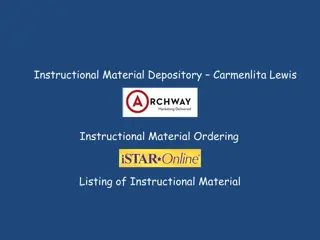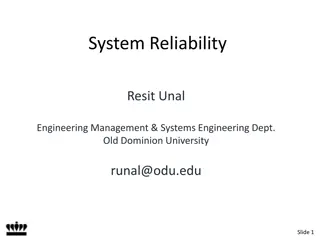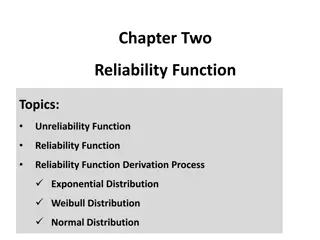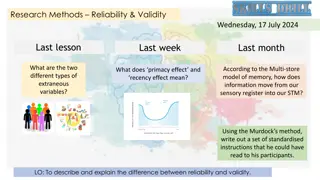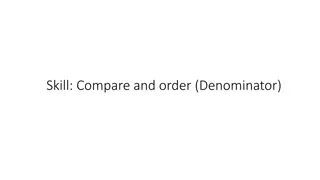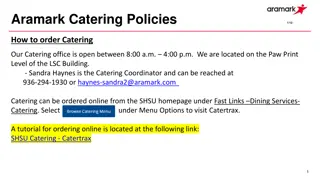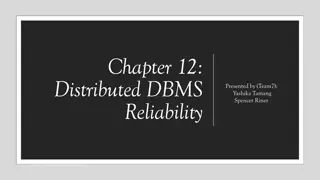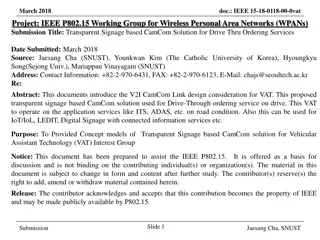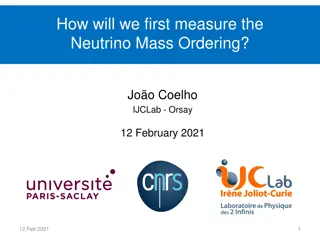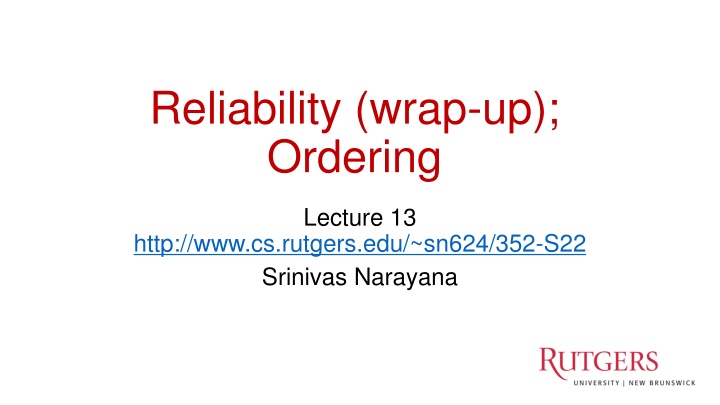
Understanding TCP Reliability Mechanisms in Networking
Explore the concepts of TCP reliability mechanisms such as cumulative and selective acknowledgments, packet retransmission strategies, and metadata usage for ensuring data reliability in networking. Gain insights into the intricacies of sliding windows, RTT, and various TCP protocols for robust data delivery.
Download Presentation

Please find below an Image/Link to download the presentation.
The content on the website is provided AS IS for your information and personal use only. It may not be sold, licensed, or shared on other websites without obtaining consent from the author. If you encounter any issues during the download, it is possible that the publisher has removed the file from their server.
You are allowed to download the files provided on this website for personal or commercial use, subject to the condition that they are used lawfully. All files are the property of their respective owners.
The content on the website is provided AS IS for your information and personal use only. It may not be sold, licensed, or shared on other websites without obtaining consent from the author.
E N D
Presentation Transcript
Reliability (wrap-up); Ordering Lecture 13 http://www.cs.rutgers.edu/~sn624/352-S22 Srinivas Narayana 1
Quick recap of concepts Pipelined Reliability TCP: Connection-oriented Q1. Which packets are currently in flight? Sliding windows RTT 7 0 6 3 4 5 0 2 1 Stop and Wait SEQ 0 Latest ACK ed Latest transmitted (or) acceptable RTT ACK pkts after a drop? ACK Q2. Which packets were successfully delivered? No Yes SEQ 1 Go-back-N Selective repeat Q3. Which packets should the sender retransmit? RTO Cumulative ACK Selective ACK
Review: Cumulative ACK RTO Sender Maximum window size = 8 0 1 2 3 4 2 5 6 Receiver Maximum window size = 8 0 1 3 4 2 5 6 E Buffered by receiver in its memory Time Packet with error (or) dropped packet Subtle: Even if there were multiple drops, retransmission after an RTO only includes the first dropped sequence number. Recovering each drop will require one RTO after corresponding packet was transmitted.
Selective repeat with selective ACK RFC2018 RTO Sender Maximum window size = 8 0 1 2 3 4 5 6 2 Receiver Maximum window size = 8 0 1 3 4 6 2 E E Buffered by receiver in its memory Time Packet with error (or) drop This slide assumes retransmissions are only triggered by an RTO. If other signals were to be used to retransmit earlier (e.g., triple dup ACK -- more on this soon), SACK significantly reduces the number of duplicate transmissions compared to cumulative-only ACKs.
TCP: Cumulative & Selective ACKs Receiver Sender Sender retransmits the seq #s it thinks aren t received successfully yet Pros & cons: selective vs. cumulative ACKs Precision of info available to sender Redundancy of retransmissions Packet header space Complexity (and bugs) in transport software On modern Linux, TCP uses selective ACKs by default 1 2 3 4 2 3 4 5 5
Metadata on TCP packets for Reliability TCP uses metadata in the form of sequence #s and ACK #s Where are these stored? Naturally, in the packet header!
TCP header structure Source port, destination port (connection demultiplexing) Size of the TCP header (in 32-bit words) Basic error detection through checksums (similar to UDP)
TCP header structure Identifies data in the packet from sender s perspective TCP uses byte seq #s Identifies the data being ACKed from the receiver s perspective. TCP uses next seq # that the receiver is expecting.
Observing a TCP exchange sudo tcpdump -i eno1 tcp portrange 56000-56010 curl --local-port 56000-56010 https://www.google.com > output.html Bonus: Try crafting TCP packets with scapy!
Buffering and Ordering in TCP 11
Memory Buffers at the Transport Layer
Sockets need receive-side memory buffers Since TCP uses selective repeat, the receiver must buffer data that is received after loss: e.g., hold packets so that only the holes (due to loss) need to be filled in later, without having to retransmit packets that were received successfully Apps read from the receive-side socket buffer when you do a recv() call. Even if data is always reliably received, applications may not always read the data immediately What if you invoked recv() in your program infrequently (or never)? For the same reason, UDP sockets also have receive-side buffers
Receiver apps interaction with TCP application process Upon reception of data, the receiver s TCP stack deposits the data in the receive-side socket buffer recv() TCP socket receiver buffers An app with a TCP socket reads from the TCP receive socket buffer e.g., when you do data = sock.recv() TCP code from sender receiver TCP interaction
Sockets need send-side memory buffers application process The possibility of packet retransmission in the future means that data can t be immediately discarded from the sender once transmitted. send() TCP socket sender buffers TCP code App has issued send() and moved on; TCP stack must buffer this data to receiver Transport layer must wait for ACK of a piece of data before reclaiming (freeing) the memory for that data. sender TCP interaction
Reordering packets at the receiver side Receiver Sender Let s suppose receiver gets packets 1, 2, and 4, but not 3 (dropped) 1 2 3 Suppose you re trying to download a document containing a report 4 1 2 What would happen if transport at the receiver directly presents packets 1, 2, and 4 to the application (i.e., receiving 1,2,4 through the recv() call)? 4 5
Reordering packets at the receiver side Receiver Sender Reordering can happen for a few reasons: Drops Packets taking different paths through a network Receiver needs a general strategy to ensure that data is presented to the application in the same order that the sender pushed it To implement ordered delivery, the receiver uses Sequence numbers Receiver socket buffer We ve already seen the use of these for reliability; but they can be used to order too! 1 2 3 4 1 2 3 5 5
Receive-side app and TCP TCP receiver software only releases the data from the receive-side socket buffer to the application if: application process recv() TCP socket receiver buffers the data is in order relative to all other data already read by the application TCP code from sender This process is called TCP reassembly receiver protocol stack
TCP Reassembly Sender/Net writes here Application can recv() up to here 1 2 1 4 2 1 4 2 3 Socket buffer memory on the receiver
Implications of ordered delivery Packets cannot be delivered to the application if there is an in- order packet missing from the receiver s buffer The receiver can only buffer so much out-of-order data Subsequent out-of-order packets dropped It won t matter that those packets successfully arrive at the receiver from the sender over the network TCP application-level throughput will suffer if there is too much packet reordering in the network Data may have reached the receiver, but won t be delivered to apps upon a recv() (...or may not even be buffered!)
Stream-Oriented Data Transfer
Sequence numbers in the apps stream Data written by application over time e.g., send() call 100 240 310 180 150 273 packet packet packet packet packet Increasing sequence #s TCP uses byte sequence numbers
Sequence numbers in the apps stream Data written by application over time e.g., send() call 100 240 310 180 150 273 packet packet packet packet packet Increasing sequence #s Packet boundaries aren t important for TCP software TCP is a stream-oriented protocol (We use SOCK_STREAM when creating sockets)
Sequence numbers in the apps stream Data written by application over time e.g., send() call 1st 2nd recv() 3rd 4th recv() A recv() call may return a part of a packet, a full packet, or multiple packets together. recv() recv() App does a recv()








